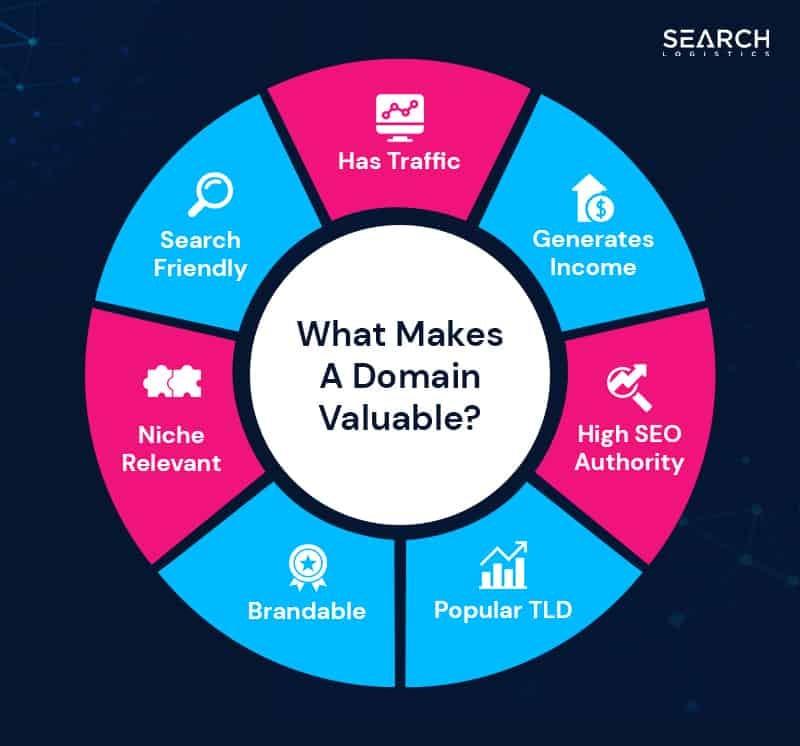Table of Contents
- Understanding the Concept of Website Name Flipping
- Identifying High-Value Domain Names for Flipping
- Crafting Effective Marketing Strategies for Your Flipped Websites
- Navigating Legal Considerations in Domain Flipping
- Maximizing Profits Through Effective Negotiation Techniques
- Q&A
- The Way Forward
Understanding the Concept of Website Name Flipping
Website name flipping is a burgeoning sector within the online entrepreneurial landscape. At its core, the concept involves purchasing a domain name with the intention of reselling it at a profit. This practice not only requires an eye for catchy and relevant names but also a deep understanding of market trends and demand. Flippers typically seek domains that are short, memorable, and easy to spell, which can significantly enhance their resale value. Here are the essential factors to consider when engaging in website name flipping:
- Domain Length: Shorter names are often more desirable and easier to remember.
- Keyword Relevance: Names that include popular keywords can attract more buyers and increase search engine visibility.
- Brandability: A name that evokes emotion or has branding potential can resonate better with future users.
The process of flipping a website name generally involves several stages: acquisition, valuation, and sale. After securing a domain, it’s crucial to evaluate its worth based on similar sales and current market demand. Pricing can vary greatly; therefore, understanding the competitive landscape allows flippers to make informed decisions. Below is a simple table showcasing the factors that influence a domain’s value:
| Factor | Description | Value Impact |
|---|---|---|
| Length | Number of characters | Shorter names typically fetch higher prices |
| Keyword Popularity | Presence of trending keywords | Higher visibility leads to increased demand |
| Extension Type | .com, .net, etc. | Popular extensions are more valuable |
Once the domain has been properly valued, the final step is its listing and promotion for sale. Leveraging platforms designed for domain sales can enhance visibility, allowing flippers to reach potential buyers effectively. Networking within industry forums and social media groups can also provide opportunities for connecting with interested parties. website name flipping embodies a blend of creativity and strategic thinking, positioning it as a viable method for generating online income.


Identifying High-Value Domain Names for Flipping
Success in the domain flipping arena hinges on the ability to spot high-value domain names. These names can often line your pockets if selected wisely. To begin with, consider the key attributes that typically characterize valuable domains:
- Keyword Richness: Domains containing popular keywords trend strongly in searches.
- Length: Shorter domains are generally more memorable and easier to type.
- Extensibility: Names that enhance branding for various niche markets can command higher prices.
Additionally, the extension of the domain plays a crucial role. While .com domains are still the gold standard, alternatives like .net, .io, or local country codes (.uk, .ca) can also hold significant value when targeting specific demographics. When evaluating domain extensions, keep an eye on:
- Reputation: Established extensions attract more interest.
- Market Trends: Track which new extensions are gaining popularity.
- Potential Usage: Consider the versatility of the domain in different contexts.
Next, analyze the domain’s history and existing traffic. A domain with a prior, well-maintained web presence often carries inherent value due to its backlinks, SEO ranking, and established audience. Useful tools for investigating domain history include:
| Tool | Purpose |
|---|---|
| Wayback Machine | View past versions of the website for content history |
| Ahrefs | Analyze backlinks and traffic metrics |
| Google Analytics | Check for existing traffic data |


Crafting Effective Marketing Strategies for Your Flipped Websites
To succeed in website flipping, it’s crucial to develop a marketing strategy that effectively positions your sites in the right market. Begin by identifying your target audience. Understanding who will be interested in your flipped website helps tailor your marketing efforts. Consider conducting surveys or utilizing tools like Google Analytics to gather data on your ideal buyers. This information can guide you in creating content and promotions that resonate with potential investors.
Next, leverage multiple channels to maximize exposure. Employing a diversified approach can significantly amplify your reach. Consider these tactics:
- SEO Optimization: Ensure your sites are optimized for search engines with relevant keywords, meta tags, and quality backlinks.
- Social Media Marketing: Utilize platforms like Facebook, Twitter, and LinkedIn to engage with potential buyers and share your listings.
- Email Campaigns: Build a mailing list and send newsletters that highlight new flips or success stories.
Don’t overlook the importance of demonstrating value to prospective buyers. Create a portfolio showcasing your previous projects, including metrics such as traffic growth and revenue generation. Use a simple table to present key data points succinctly:
| Website | Purchase Price | Selling Price | Traffic Growth |
|---|---|---|---|
| ExampleSite1.com | $2,000 | $5,000 | 200% |
| ExampleSite2.com | $1,500 | $4,200 | 150% |


Navigating Legal Considerations in Domain Flipping
When engaging in domain flipping, it’s crucial to understand the legal implications associated with buying and selling domain names. First and foremost, ensure that you are aware of trademark laws in your region. Domains that closely resemble existing trademarks can lead to legal conflicts. This means before acquiring a domain, conduct thorough research to confirm that the name does not infringe on any existing trademarks. Utilizing tools like the USPTO’s trademark database can help you sidestep potential legal pitfalls.
Another important aspect is the adherence to registrar agreements. Every domain name you purchase comes with a set of terms and conditions outlined by the registrar. Familiarize yourself with these agreements to avoid clauses that may restrict the resale of the domain or impose additional fees. Some registrars may include specific rules regarding domain transfers, which can impact your flipping strategy. Thus, keeping detailed records of your purchases and any agreements will be beneficial in ensuring compliance.
consider the importance of maintaining an ethical approach to domain flipping. While it may be tempting to acquire names that could mislead or confuse users, prioritize integrity in your transactions. Engaging in practices such as cyber-squatting, acquiring domain names solely to sell at exorbitant prices, can result in legal actions against you. Building a reputation based on fairness not only protects you legally but also fosters trust within the community, leading to potential repeat business.


Maximizing Profits Through Effective Negotiation Techniques
In the realm of website name flipping, effective negotiation is crucial for increasing your profit margins. By honing your negotiation skills, you can not only secure better deals but also foster relationships that can lead to future opportunities. Start by conducting thorough research on comparable sales in the market. Understanding the valuation of domain names based on factors such as length, keywords, and extension can arm you with data to justify your asking price. With this information in hand, approach potential buyers with confidence, emphasizing the unique value proposition of your domains.
Moreover, utilizing psychological strategies in negotiation can provide a significant advantage. Framing your offer in a way that highlights the benefits rather than just stating the price can make a substantial difference. For instance, instead of saying “this domain is listed at $5,000,” you can present it as “for just $5,000, you’re acquiring a premium domain that will enhance your business credibility and visibility online.” This technique not only justifies your price but also creates an emotional connection to the potential buyer’s needs and aspirations.
be prepared to walk away from a deal that does not meet your financial targets. Having a clear idea of your minimum acceptable offer will help you stay firm during negotiations. Consider crafting a simple table to track different offers and conditions, enabling you to gauge the best responses quickly:
| Offer | Buyer | Response Time | Status |
|---|---|---|---|
| $4,000 | Buyer A | 2 days | Pending |
| $5,500 | Buyer B | 1 day | Accepted |
| $3,500 | Buyer C | 3 days | Declined |
By actively using tables like this and employing the right techniques, you can negotiate effectively, maximizing your profits in the competitive landscape of website name flipping.
Q&A
Q&A: Understanding Website Name Flipping
What is website name flipping?
Website name flipping is the practice of buying domain names or websites with the intention of selling them for a profit. Flippers look for domains that have potential value, whether due to their keywords, length, or branding potential, and then resell them to buyers who find them appealing for their projects or businesses.Why do people flip website names?
People flip website names for various reasons, including the potential for substantial profit. The domain market can be lucrative, especially if you identify trending niches or desirable keywords. Additionally, some individuals enjoy the thrill of operating in the domain market, constantly seeking valuable assets to buy and sell.How do I get started in website name flipping?
To begin flipping website names, start with research. Look for domain names that are short, memorable, and relevant to popular or emerging industries. Platforms like GoDaddy, Namecheap, and Flippa can help you find domains to purchase. You’ll also want to get familiar with domain valuation to assess what makes a domain appealing to potential buyers.What factors increase the value of a domain name?
Several factors can increase the value of a domain name, including:- Keywords: Domains that include popular or industry-specific keywords typically hold more value.
- Length: Shorter domains are often more desirable and memorable.
- TLD (Top-Level Domain): .com domains tend to be more valuable than other extensions.
- Brandability: Names that are catchy and easy to brand can attract more buyers.
- Traffic History: Domains that have a proven history of traffic or backlinks can be more valuable.
Is website name flipping risky?
Like any investment, website name flipping comes with risks. Market trends can be unpredictable, and it’s possible to invest in domains that fail to sell. Research is crucial, as is staying updated on industry trends. Diversifying your investments and not spending more than you can afford to lose can help mitigate risks.How can I effectively market my flipped websites?
Effective marketing can make a significant difference in the sale of your flipped websites. Utilize:- Online Marketplaces: Platforms like Flippa or Sedo that specialize in domain sales can connect you with potential buyers.
- Social Media: Promote your offers on platforms like Twitter, LinkedIn, or Facebook groups related to domain flipping.
- SEO: Optimize your website listing with relevant keywords to improve visibility in search queries.

